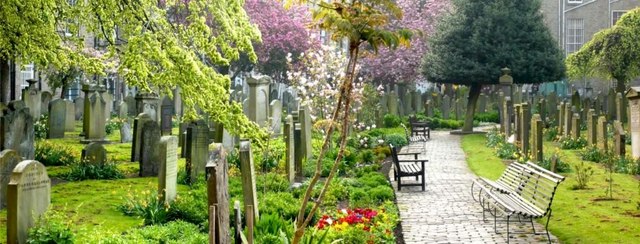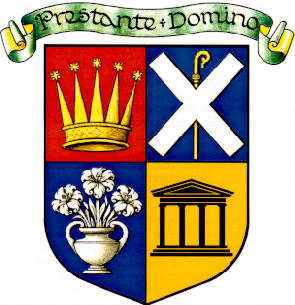
The High School of Dundee is a private, co-educational, day school in Dundee, Scotland, which provides nursery, primary and secondary education to just over one thousand pupils. Its foundation has been dated to 1239, and it is the only private school in Dundee.

Greyfriars Kirk is a parish church of the Church of Scotland, located in the Old Town of Edinburgh, Scotland. It is surrounded by Greyfriars Kirkyard.
Dundee is the fourth-largest city in Scotland with a population of around 150,000 people. It is situated on the north bank of the Firth of Tay on the east coast of the Central Lowlands of Scotland. The Dundee area has been settled since the Mesolithic with evidence of Pictish habitation beginning in the Iron Age. During the Medieval Era the city became a prominent trading port and was the site of many battles. Throughout the Industrial Revolution, the local jute industry caused the city to grow rapidly. In this period, Dundee also gained prominence due to its marmalade industry and its journalism, giving Dundee its epithet as the city of "jute, jam and journalism".
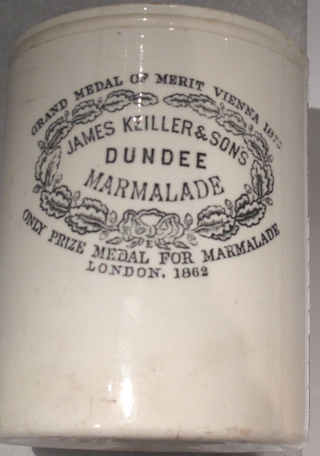
Keiller's marmalade is a Scottish marmalade, believed to have been the first commercial brand made in Great Britain. It was first manufactured by James Keiller in Dundee, Scotland, later creating James Keiller & Son, a brand name which became iconic in the 18th and 19th centuries, and has been sold several times.

The Old Calton Burial Ground is a cemetery in Edinburgh, Scotland. It located at Calton Hill to the north-east of the city centre. The burial ground was opened in 1718, and is the resting place of several notable Scots, including philosopher David Hume, scientist John Playfair, rival publishers William Blackwood and Archibald Constable, and clergyman Dr Robert Candlish. It is also the site of the Political Martyrs' Monument, an obelisk erected to the memory of a number of political reformers, and Scotland's American Civil War Memorial.

Greyfriars Kirkyard is the graveyard surrounding Greyfriars Kirk in Edinburgh, Scotland. It is located at the southern edge of the Old Town, adjacent to George Heriot's School. Burials have been taking place since the late 16th century, and a number of notable Edinburgh residents are interred at Greyfriars. The Kirkyard is operated by City of Edinburgh Council in liaison with a charitable trust, which is linked to but separate from the church. The Kirkyard and its monuments are protected as a category A listed building.
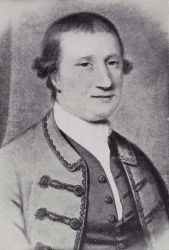
Sir John Wedderburn, 5th Baronet of Blackness, (1704–1746) was a Perthshire gentleman who joined the 1745 rebellion of Charles Edward Stuart. He was captured at the Battle of Culloden, taken to London, and convicted of treason. He was hanged, his estates were forfeit to the Crown, and his family was attainted. The Blackness in his title is Blackness House in Dundee rather than Blackness in Lothian just west of Edinburgh. His son John Wedderburn of Ballindean fled after his father's death to Jamaica, where he re-established the family's fortunes via slave sugar, and eventually regained his father's title.

The Western Cemetery in Dundee, Scotland, is a still-operational cemetery founded in the mid 19th century. It rises northwards from the Perth Road, with terraces in its upper sections. It views over the Firth of Tay to the Tay Rail Bridge and Fife. The Western Cemetery is maintained and managed by Dundee City Council.
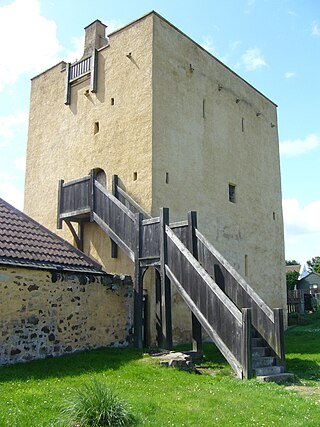
William Little of Liberton (1525–1601) was a 16th-century Scottish merchant and landowner who served as Lord Provost of Edinburgh 1586/87 and 1591/92. He was one of the founders of Edinburgh University.
William Trotter of Ballindean JP DL (1772–1833) was a Scottish cabinet-maker who served as Lord Provost of Edinburgh from 1825 to 1827.

The Magdalen Chapel is a 16th-century chapel on Cowgate in the Old Town of Edinburgh, Scotland. It is designated as a Category A listed building.
Sir George Haliburton, Lord Fodderance (c.1580–1649) was a 17th-century Scottish judge and Senator of the College of Justice.

East Preston Street Burial Ground is a burial ground in south Edinburgh holding graves from the 19th and 20th century. The graveyard is in the care of the City of Edinburgh Council. It stands at the junction of East Preston Street and Dalkeith Road. The property is a listed building.
Alexander Riddoch DL was a Scottish merchant who served eight non-consecutive terms as Provost of Dundee. His nicknames included the "Old Hawk". "The Gudeman of Blacklunans" and "Archdeacon of the Self-Elected".

Samuel Bell (1739–1813) was a Scottish architect mainly associated with the town of Dundee. He was the prime shaper of the city centre and in particular the Nethergate.

The Collegiate Church of St Mary in the Fields was a pre-Reformation collegiate church in Edinburgh, Scotland. Likely founded in the 13th century and secularised at the Reformation, the church's site is now covered by Old College.

Greyfriars Burial Ground is an historic cemetery in Perth, Scotland, dating to 1580. It is now Category A listed, with its collection of gravestones considered one of the best in Scotland. The cemetery closed to burials in 1978.

The timeline of Dundee history shows the significant events in the history of Dundee, Scotland.
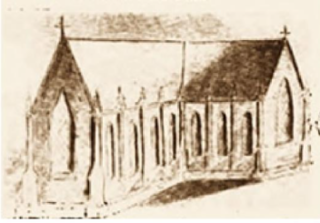
The Observant Order of Greyfriars was a friary of the Franciscan Order located in the Scottish city of Perth. It was founded by Laurence Oliphant, 1st Lord Oliphant, in 1496 and destroyed on 11 May 1559 following the Scottish Reformation, started by John Knox in his sermon at Perth's St John's Kirk, just a few hundred yards to the north.




















